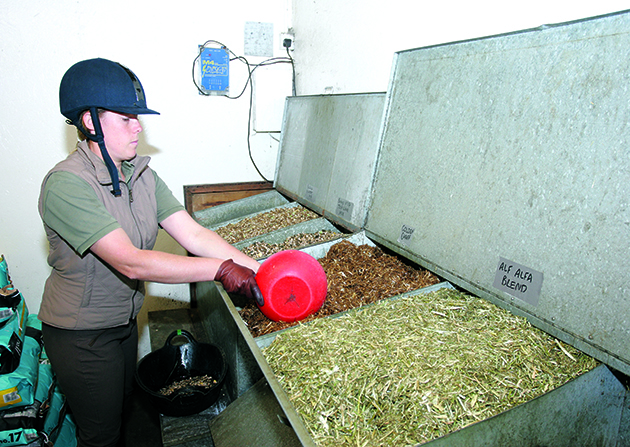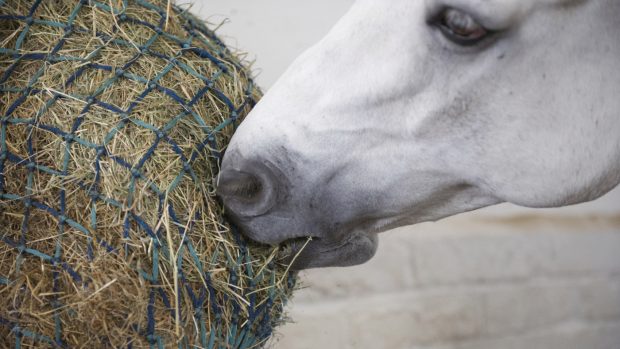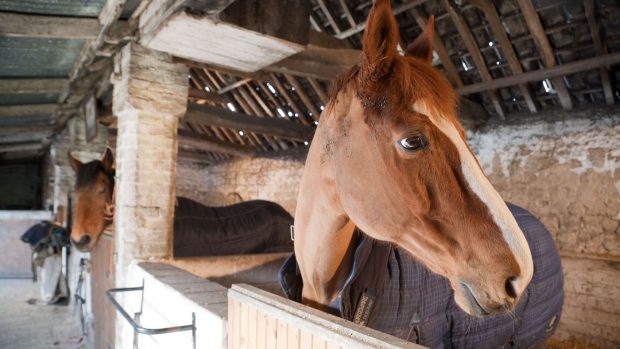The modern horse still has its ancestors’ gut design – that of a fibre-digesting herbivore. This means that two-thirds of the digestive tract is devoted to fibre digestion through fermentation, while just one-fifth is able to process protein, oil and starch from cereals.
For horses in light work, feeding regimes typically match digestive design, as most of the diet is forage. However, for horses in medium to hard work, low-energy forage may not provide sufficient energy. In this situation additional feedstuff is required to counter the shortfall in energy, ensuring the horse can maintain condition and have sufficient stamina to do the work required.
Traditionally, cereals were fed to horses to provide energy, but this typically includes high levels of starch, which the horse’s digestive system is not designed to cope with. If the cereals are not fully digested before they pass into the hindgut, this can lead to problems including colic, excitable behaviour and changes in temperament. As a result there has been an increasing trend towards feeding fibre and oil as energy sources to horses that need more than a basic forage diet.
Fibre as an energy source
Fibre can provide the horse with energy, as well playing an important role as a filler, to help prevent gastric ulcration and aid digestion. Made up of a complex of carbohydrates and compounds, it is broken down by bacterial fermentation in the hindgut.
Fibre is made up of lignin, cellulose and hemicellulose. Lignin is indigestible, and feedstuff with high lignin levels, such as straw and mature seed hay, have a low energy content. Cellulose and hemicellulose are digested by bacteria in the hindgut. The higher the levels of cellulose and hemicellulose, the more energy the forage or fibre-based feeds have to offer. If you are unsure what level of energy your forage is providing then it may help to have it analysed by a professional.
While all horses should receive ad-lib forage as the basis of their diet, good quality fibre is particularly useful for:
- Horses requiring stamina – another facet of fibre digestion is that the energy is slow release, capable of sustaining work for a long period, making it ideal for hunters and endurance horses
- Horses with loose droppings – check to see they are getting sufficient long fibre in the diet
- Those prone to laminitis, colic and tying up – these problems can all be related to disruptions in fibre supply through the gut
- Whenever grass quantity drops – particularly relevant during hot summer and winter. As soon as grass growth slows, a horse eats less fibre each day.
For gut health and general welfare, horses (other than those on a weight-loss programme) should ideally be fed forage ad lib, and at least 15gDM/kg bodyweight (i.e. 1.5% of bodyweight). This would mean giving a minimum of 7.5kg forage DM for a 500kg horse per day. This equates to 8.5kg of a 90% DM hay, or 11kg of a 70% DM haylage. Even those horses in very high intensity work should be fed forage amounting to at least 12.5g DM/kg bodyweight (i.e. 1.25% of bodyweight).
You might also be interested in:
Read advice from a range of experts on how to best feed a horse with gastric ulcers
Caroline Hughes MRCVS explains the science behind her three golden feeding rules, and why you must follow them in order

The best way to feed a horse to avoid gastric ulcers

3 easy ways to keep your horse’s digestive system healthy

Subscribe to Horse & Hound this spring for great savings
Horse & Hound magazine, out every Thursday, is packed with all the latest news and reports, as well as interviews, specials, nostalgia, vet and training advice. Find how you can enjoy the magazine delivered to your door every week, plus options to upgrade your subscription to access our online service that brings you breaking news and reports as well as other benefits.





